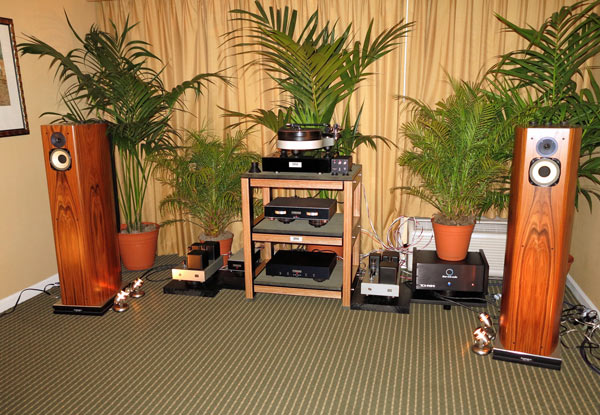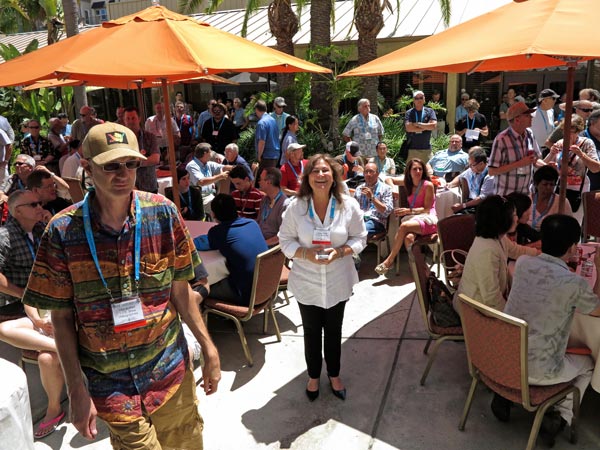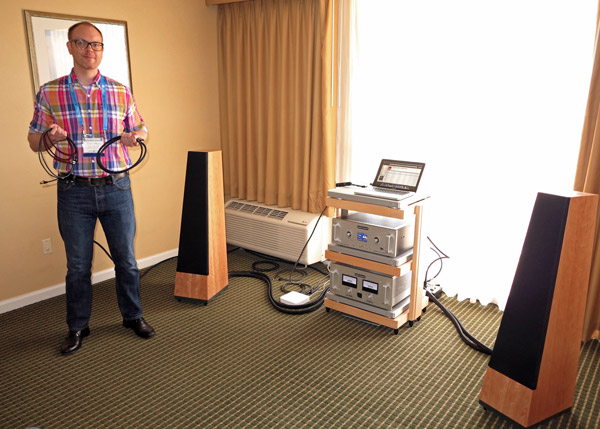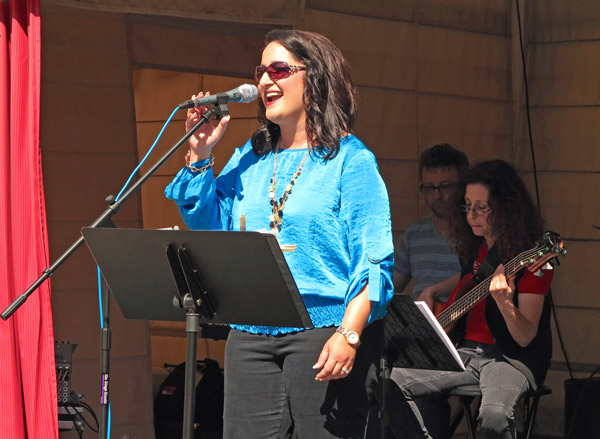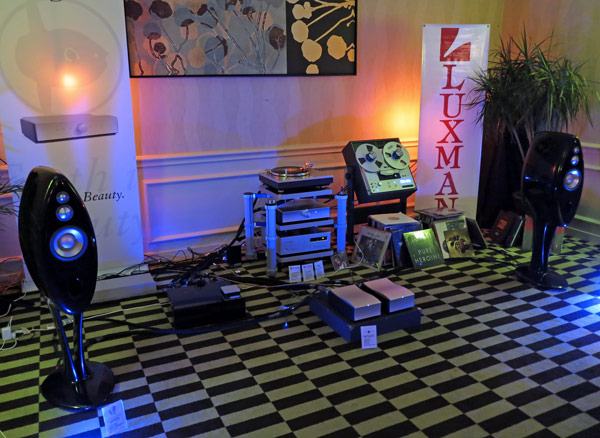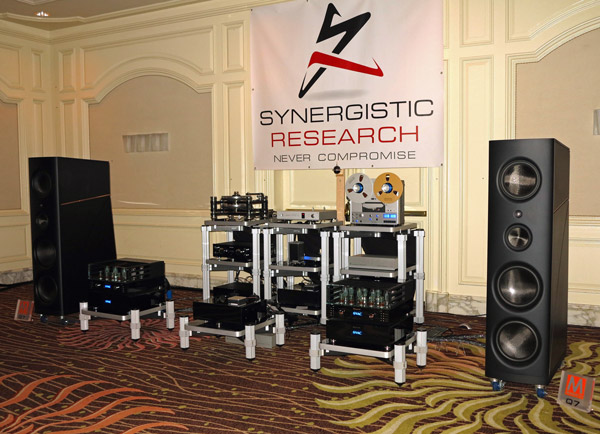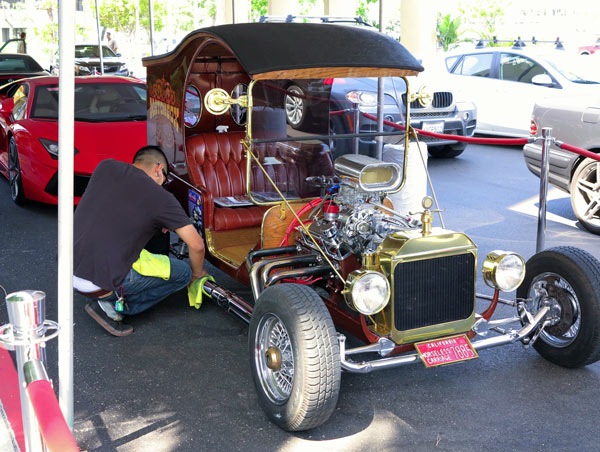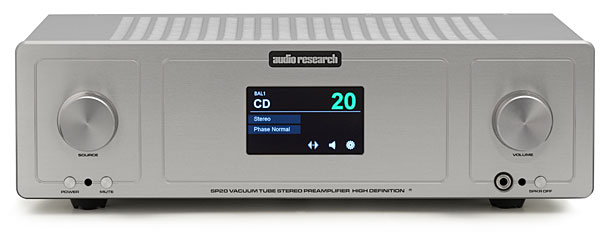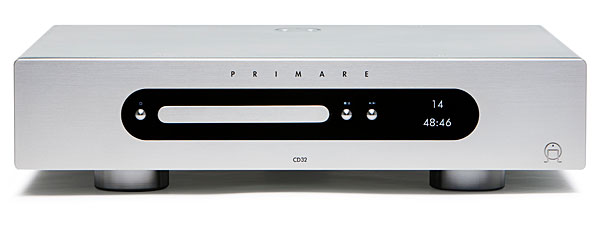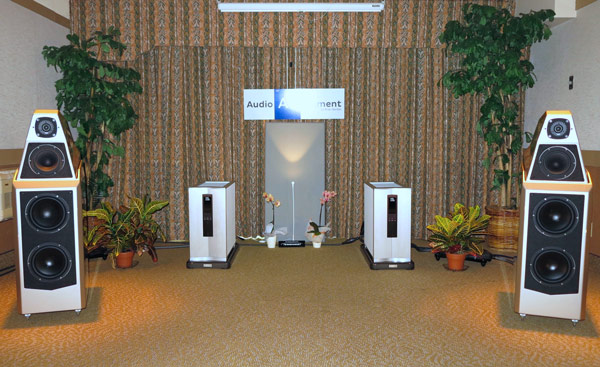
Entering the first of four rooms sponsored by Brian Berdan's Audio Element of Pasadena felt like coming home. Not only was I among familiar friendsWilson Audio Sasha Series 2 loudspeakers ($29,950/pair); mighty VTL Siegfried Reference monoblocks Series II ($65,000/pair), accompanied by VTL's TL-7.5 Reference line preamplifier Series III ($25,000) and TP-6.5 Signature phono stage ($12,000); dCS four-stack, state-of-the-art Vivaldi Digital Playback System ($108,996 total); Transparent Opus MM and Reference cables ($105,500 total); Grand Prix Audio Silverstone 4-shelf Isolation system ($19,175), Monaco-5 shelf Isolation system ($8400), and Formula Platforms ($6900); Audience AdeptResponse aR12TSS power conditioner ($11,545); and, a bit less familiar, Grand Prix Audio Monaco 1.5 turntable ($23,500) with new Tri-Planar SE tonearm ($7500) and luscious Lyra Etna cartridge ($6995)but I also finally heard a quality of musical presentation that decades upon decades of attending live performance have led me to hunger for.
Continue Reading »

